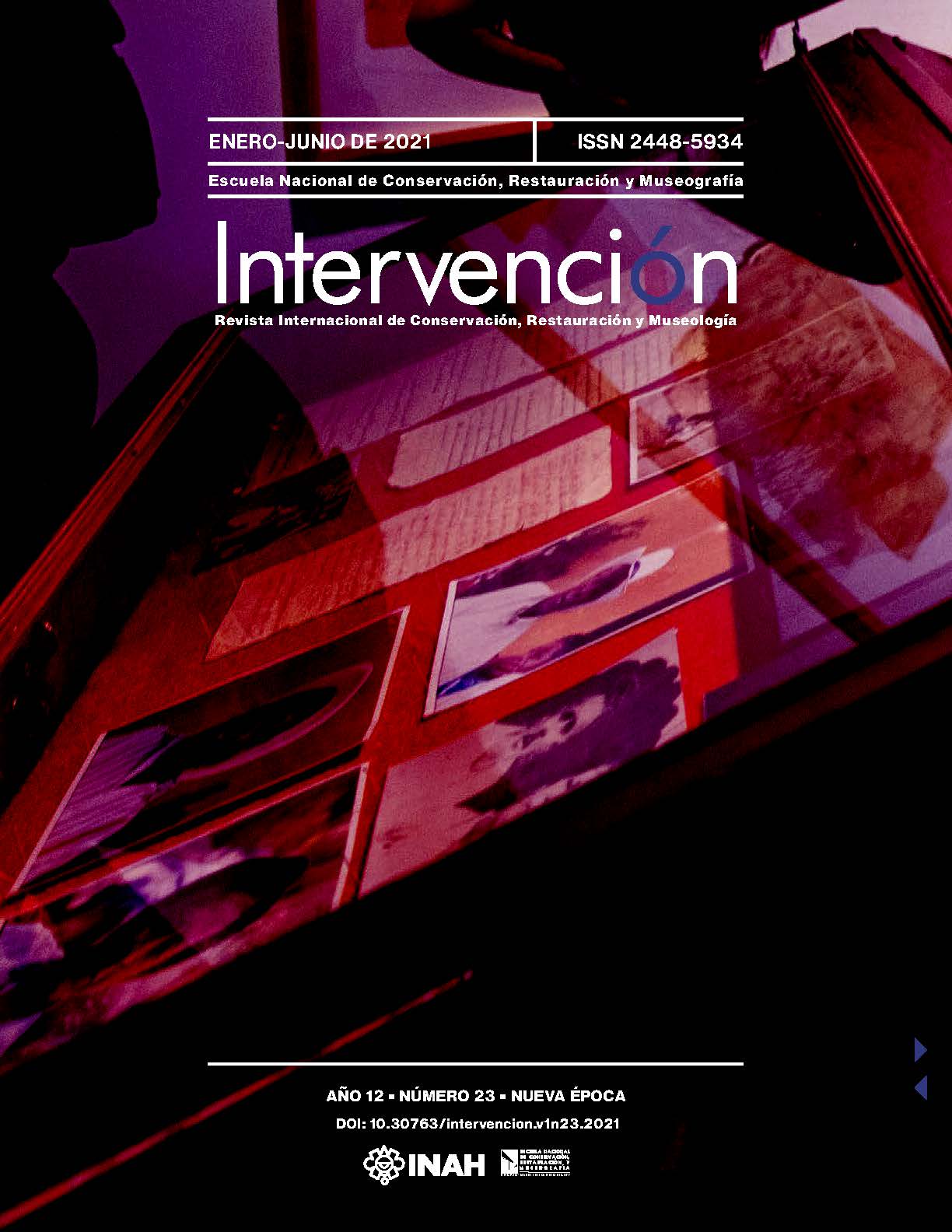The Hegemonic Principle of Provenance as a Conceptual Tool to Understand the Archive
Published 2025-01-24
Copyright (c) 2021 Instituto Nacional de Antropología e Historia (INAH)

This work is licensed under a Creative Commons Attribution-NonCommercial 4.0 International License.
How to Cite
Abstract
The present ESSAY seeks to support the definition of hegemonic principle of provenance as a useful concept to research, manage and conserve documentary heritage of different types. Its definition is based on an array of bibliography which could be considered a part of the archival turn. This principle involves a structuring inertia in terms of interpretation derived from the context of the records' production, which implies the potential replication of forms of symbolic violence by means of the archive. The hegemonic principle of provenance of archives translates into omissions, exclusions and, indeed, the reproduction of representations foreign to the assumed identities by the people registered in the records.
Downloads
References
- Bates, T. R. (1975, abril-junio). Gramsci and the theory of hegemony. Journal of History of Ideas 36(2), 351-366. Recuperado de http://www.jstor.org/stable/2708933
- Bearman, D. A. y Lytle, R. H. (1985-1986, invierno). The power of the principle of provenance. Archivaria 21, 14-27. Recuperado de https://archivaria.ca/index.php/archivaria/article/view/11231/12170
- Castillejo, A. (2016). Violencia, inasibilidad y la legibilidad del pasado: una crítica a la operación archivística. En F. Gorbach y M. Rufer (Coords.). (In)disciplinar la investigación: archivo, trabajo de campo y escritura (pp. 114-139). México: Universidad Autónoma Metropolitana-Siglo XXI Editores.
- Caswell, M. (2014). Archiving the unspeakable. Silence, memory and the photographic record in Cambodia. Madison: The University of Wisconsin Press.
- Cook, T. (2003). Evidence, memory, identity, and community: four shifting archival paradigms. Archival Science 13, 95-120.
- Cook, T. (2010). Panoramas del pasado: archiveros, historiadores y com-bates por la memoria. Tabula 13, 153-166. Recuperado de https://publicaciones.acal.es/tabula/article/view/257
- De Certeau, M. (2006). La escritura de la historia (2.ª reimpresión, trad. Jorge López Moctezuma). México: Universidad Iberoamericana.
- Derrida, J. (1997). Mal de archivo. Una impresión freudiana (1.ª ed., trad. Francisco Vidarte). Madrid: Trotta.
- Dong, L., Blanco-Rivera, J. A., Caswell M. y Steele, J. (2017). Methods for studying archives in a Human Rights context. En A. J. Gilliland, S. Mackem-mish y A. Lau (Eds.). Research in the archival multiverse (pp. 935-1967). Melbourne: Monash University Publishing.
- Duff, W. M. y Harris, V. (2002). Stories and names: Archival description as narrating records and constructing meanings. Archival Science 2, 263-285.
- Fernández, J. M. (2005). La noción de violencia simbólica en la obra de Pierre Bourdieu: una aproximación crítica. Cuadernos de Trabajo Social 18, 7-31. Recuperado de https://revistas.ucm.es/index.php/CUTS/article/view/CUTS0505110007A/7582
- Giacaglia, M. (2002). Hegemonía. Concepto clave para pensar la política. Tópicos 10, 151-159. Recuperado de https://www.redalyc.org/pdf/288/28801009.pdf
- Gilliland, A. J. (2012, septiembre). Contemplating Co-creator Rights in Archival Description. Knowledge Organization 39(5), 340-346.
- Gilly, A. (2007). Historia a contrapelo. Una constelación. México: Ediciones Era.
- Gramsci, A. (1971). El materialismo histórico y la filosofía de Benedetto Croce (trad. Isidoro Flambaun). Buenos Aires: Ediciones Nueva Visión.
- Guasch, A. M. (2011). Arte y archivo, 1920-2010. Genealogías, tipologías y discontinuidades. Madrid: Akal.
- Gutiérrez, A. B. (2004). “Poder, habitus y representaciones: recorrido por el concepto de violencia simbólica en Pierre Bourdieu”. Revista Complutense de Educación 1(15), 289-300. Recuperado de https://revistas.ucm.es/index.php/RCED/article/view/RCED0404120289A/16345
- Heredia, A. (1991). Archivística general. Teoría y práctica. Sevilla: Servicio de Publicaciones de la Diputación de Sevilla.
- Hurley, C. (1995). Problems with provenance. Archives & Manuscripts 23(2), 234-259.
- Hurley, C. (2016). Parallel Provenance (if these are your records, where are your stories?). Chris Hurley’s Stuff. Recuperado de https://www.descriptionguy.com/images/WEBSITE/parallel-provenance.pdf
- Ketelaar, E. (2017). Archival turns and returns. Studies of the Archive. En A. J. Gilliland, S. Mackemmish y A. Lau (Eds.). Research in the archival multiverse (pp. 228-263). Melbourne: Monash University Publishing.
- Millar, L. (2002, mayo). The death of the fonds and the resurrection of provenance: archival context in space and time. Archivaria 53, 1-15. Recuperado de https://archivaria.ca/index.php/archivaria/article/view/12833/14048
- Müller, S., Feith, J. A. y Fruin, R. (2003 [1898]). Manual for the arrangement and description of archives (2.ª ed., trad. Arthur H. Levitt, intr. Peter Horsman et al.). Chicago: Society of American Archivists. Recuperado de http://hdl.handle.net/2027/mdp.39015057022447
- Nesmith, T. (2006). The concept of societal provenance and records of nineteenth-century Aboriginal-European relations in Western Canada: implications for archival theory and practice. Archival Science 6, 351-360. https://doi.org/10.1007/s10502-007-9043-9
- Sánchez-Macedo, J. (2020). El giro archivístico: su impacto en la investi-gación histórica. Anuario Humanitas 47, 183–223. Recuperado de http://humanitas.uanl.mx/index.php/ah/article/view/279
- Schellenberg, T. R. (1965). The Principle of Provenance and Modern Re-cords in the United States. American Archivist 28(1), 39-41. https://doi.org/10.17723/aarc.28.1.k313660543512x76
- Stoler, A. L. (2010). Archivos coloniales y el arte de gobernar. Revista Colombiana de Antropología 46(2), 465-496. Recuperado de http://www.scielo.org.co/pdf/rcan/v46n2/v46n2a10.pdf
- Sweeney, S. (2008). The ambiguous origins of the archival principle of “provenance”. Libraries & the Cultural Record 43(2), 193-213. Recuperado de http://www.jstor.org/stable/25549475
- Tello, A. M. (2018). Anarchivismo. Tecnologías políticas del archivo. Buenos Aires: La Cebra.
- Wood, S., Carbone, K., Cifor, M., Gilliland, A. y Punzalan, R. (2014). Mobilizing records: re-framing archival description to support human rights. Archival Science 14, 397-419.
- Yale, E. (2015). The History of Archives. The State of the Discipline. Book History 18(1), 332-359. https://doi.org/10.1353/bh.2015.0007


